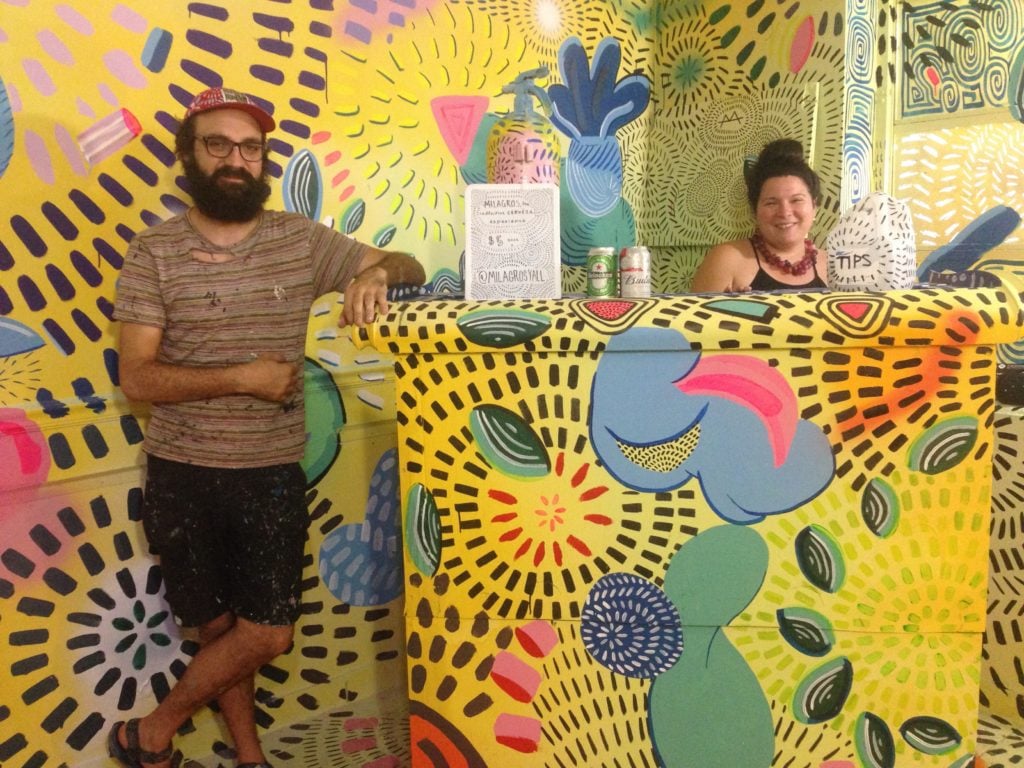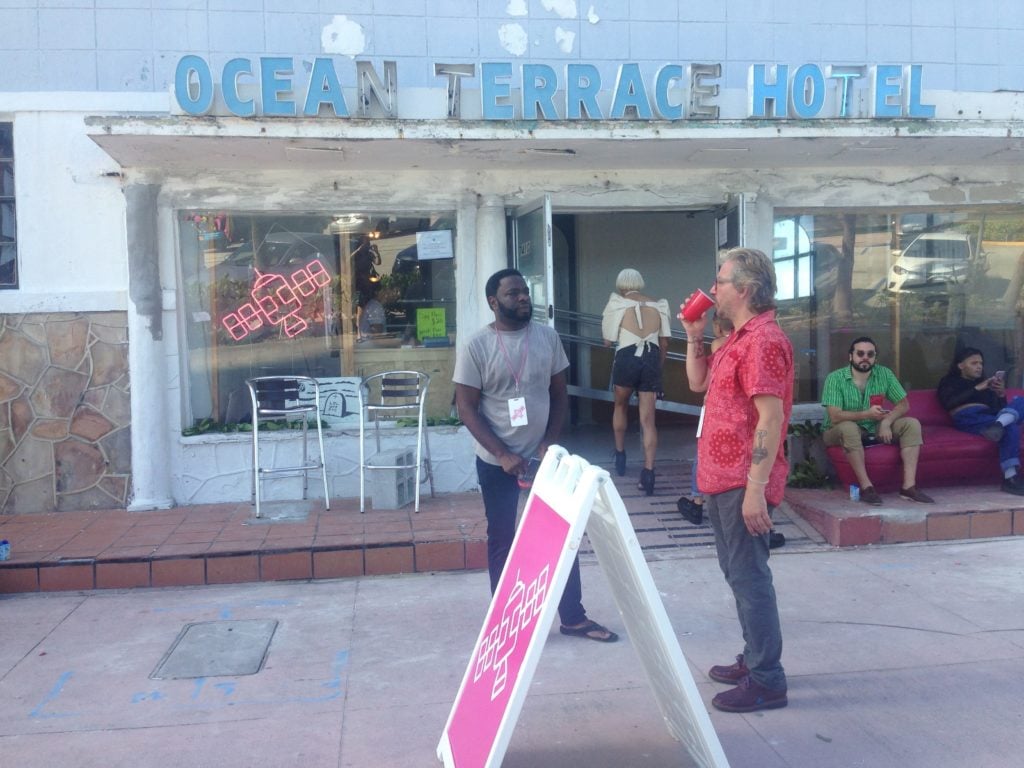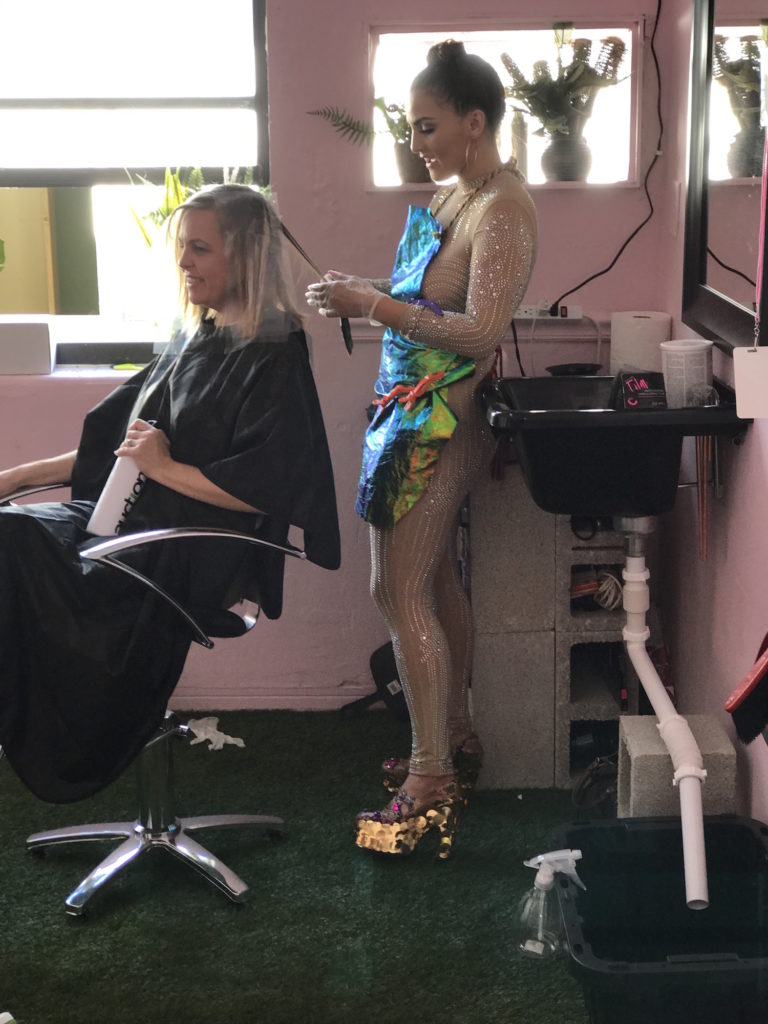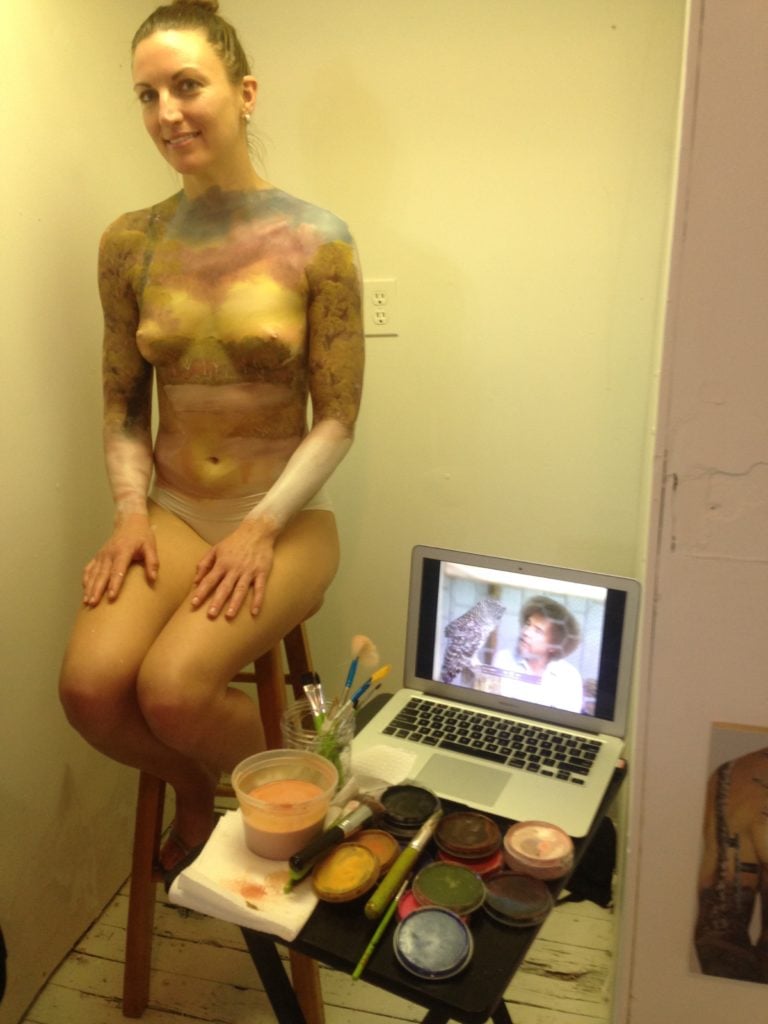Art Fairs
Satellite Is the Only Fair in Miami Giving Out Free Haircuts in an Abandoned Hotel
The fair is "a heart-based gift to the emerging art community."

The fair is "a heart-based gift to the emerging art community."

Sarah Cascone

The setting of an art fair sets the tone. The epitome of the establishment, Art Basel Miami Beach takes over the massive Miami Beach Convention Center, while Art Miami erects a sturdy white tent overlooking the water. The three-year-old Satellite Art Show, on the other hand, does things a little bit differently up at the old Ocean Terrace Hotel in North Beach.
Unlike elegant hotel fairs further south, Satellite’s venue is bare bones. The property, slated for demolition, has no plumbing. The facade is crumbling, and the exhibiting artists have no qualms with altering their environs. One art collective cut a hole in the wall separating their two rooms. Another artist carted in 2,000 pounds of sand. They have, as the promotional materials proudly proclaim, complete creative control.

Satellite Art Show. Photo courtesy of Sarah Cascone.
Fair founder Brian Whiteley, an artist who has been hosting annual fairs during Art Basel Miami Beach since 2012 (his first effort was SELECT Fair) chooses his venue based on cost, in an effort to make things as affordable as possible for participants.
“If you have to spend $20,000 on a booth, a fair is strictly market driven,” Whiteley told artnet News. In comparison, he charges just $15 per square foot, with “booths” that range in price from $2,750 to $3,000—with discounts, even, for return exhibitors.
But going the low budget route has challenges of its own. Even though Satellite held part of its first multi-venue edition at the Ocean Terrace in 2015, getting permission from the city was much more difficult this time around. “Yesterday I was down at City Hall until 5:30 fighting to get the permitting approved,” Whiteley admitted. He was forced to put down a $3,000 deposit in order to open as scheduled.
Brooklyn gallerist Christopher Stout, who represents Whiteley and is a Satellite exhibitor, showing a selection of work by artists who also run organizations dedicated to promoting other artists, is impressed by Whiteley’s dedication to the fair’s success. “Brian is fostering and enabling conversations that aren’t happening in New York,” he told artnet News. “This is a heart-based gift to the emerging art community.”
Collector (and Curatious founder) Holly Hager agreed, adding that she insists on paying for a ticket every year even though Whiteley offers her a VIP ticket. “Anything I can do to support this fair—it’s the art that needs to seen,” she told artnet News. “Brian is breaking the exclusionary model of the art world to make important work accessible.”

The Tanga art collective is giving out free haircuts at Satellite Art Show. Photo courtesy of Tanga.
That work can be quite a departure from Miami’s typical Art Week offerings.
“If you want your haircut, come back in 20 minutes,” Alfredo Travieso told artnet News.
His three-person collective, Tanga, was offering free cut and color for all visitors—tips welcome. Andrew Prieto had jerry-rigged a sink, with all the run-off collecting in a bucket. Rachel Chick, also a trained stylist, was in charge of the haircuts. Travieso was using all of the sudsy mixture of washed-away hair, shampoo, and coloring chemicals to craft a sculpture on a make-shift pedestal in the center of the room.

Trina Merry painted this model following Bob Ross’s instructions at Satellite Art Show. Photo courtesy of Sarah Cascone.
“Everything that comes out of the plumbing goes into this,” he explained, pointing to the artwork beginning to take shape over a chicken wire base.
Other off-beat happenings included a pair of mimes making out in the stairwell—by Luis Mejico, part of returning exhibitor Performance Is Alive‘s continuous performance art lounge—a topless woman serving as a canvas for a Bob Ross-style painting with a political twist, by Trina Merry; and a “clown-meets-pole-dancer” performance experience from perennial Satellite favorite Dangerous Rose.
“This is a special place,” said Whiteley. “The idea is to have an experience in each room that is different.”
You’ll also spot some work that you might recognize from the main fair: Kalup Linzy, who is performing each afternoon at Art Basel Miami Beach at David Castillo Gallery’s booth, is pulling double duty during Miami Art Week. At Basel, he’s selling black-and-white collaged paintings by his character Katonya. Similar works are available at Satellite, accompanied not by silent performance but the debut of his visual album, Tangled Up, playing on a flatscreen TV.
“I don’t feel that market pressure that I have in the Convention Center,” Linzy told artnet News, noting that he felt as if his songs would fit in well with the party-like atmosphere at Satellite, which is open until 10 p.m. each night. The Katonya paintings are the same price, $2,500, at both fairs.